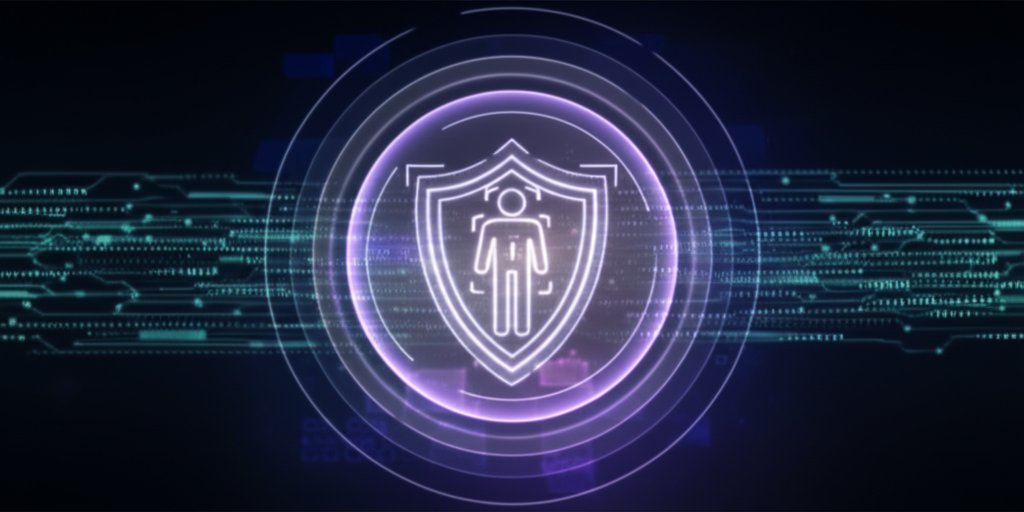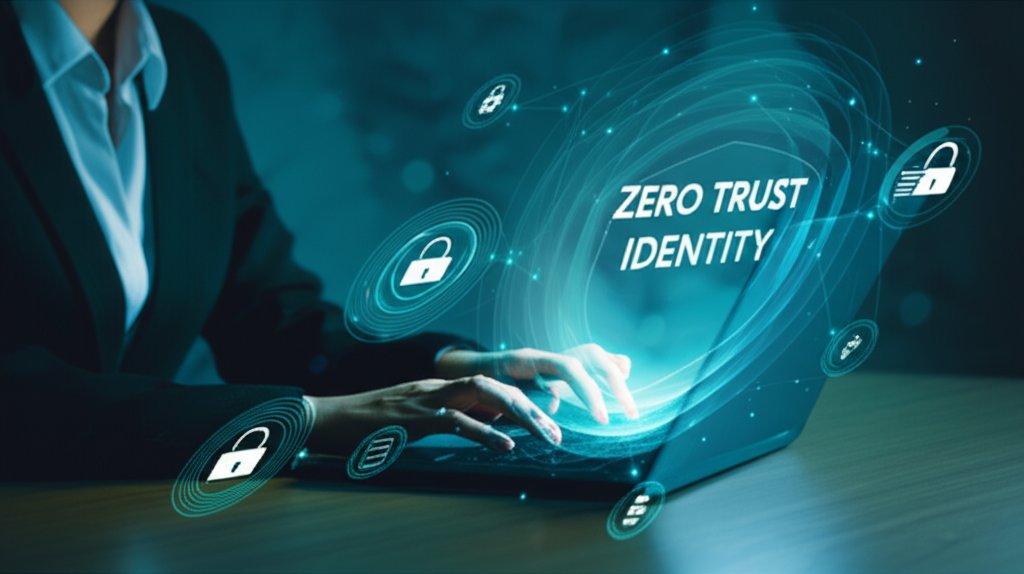Imagine this: a former employee, whose access you thought was revoked, still logs into your cloud storage and downloads sensitive customer data. Or perhaps your administrative team spends 5 hours every week manually setting up accounts and permissions for new hires, only to miss revoking access for departing staff. These aren’t just minor annoyances; they’re critical security gaps that disproportionately impact small and medium-sized businesses (SMBs).
In today’s interconnected digital world, managing who has access to what can indeed feel like an impossible task, akin to herding digital cats. With employees constantly joining, leaving, and utilizing a myriad of online tools, applications, and data across different platforms, securing your cloud identity for small businesses becomes paramount. Without a robust system for SMB access control, this complexity doesn’t just slow down operations; it creates glaring security vulnerabilities that cybercriminals actively exploit. In fact, a recent report indicates that nearly half of all cyberattacks target small businesses, often due to weak access management practices. This isn’t just about losing data; it’s about significant financial penalties, reputational damage, and lost customer trust.
This is precisely why automated identity governance, often referred to as automated small business identity management, is no longer just for enterprise giants. It’s an indispensable, yet frequently overlooked, strategy designed to empower businesses like yours. It helps you regain granular control over your digital front door, ensuring only authorized individuals can enter and automating the vigilance so you don’t have to constantly guard it yourself. By integrating automated identity governance, you can drastically reduce manual workloads, prevent costly data breaches, and build a stronger, more resilient digital security posture, all without requiring a dedicated IT department.
What You’ll Learn
By the end of this guide, you’ll be equipped to understand and implement:
- Why automated identity governance (IG) is not just a ‘nice-to-have’ but an indispensable security and efficiency solution for small businesses, moving beyond basic protections.
- The fundamental concepts of modern access management, demystified for practical application.
- A clear, step-by-step blueprint to confidently implement automated IG within your business, even if you lack extensive technical expertise.
- Critical pitfalls to recognize and avoid, ensuring your security efforts are both effective and sustainable long-term.
Prerequisites for Getting Started
Before we delve into the specifics, here’s what you’ll need to begin your journey toward enhanced digital security:
- A commitment to bolstering your business’s security and operational efficiency: This proactive mindset is, without doubt, the most critical ingredient.
- A foundational understanding of your current digital environment: Take stock of your team — employees, contractors — the systems and applications they utilize, and how access is currently granted. You don’t need a formal, exhaustive audit at this stage, just a clear mental or simple documented map.
- An openness to adopting modern, user-friendly tools: Our focus will be on accessible, cloud-based solutions specifically engineered for the needs and budgets of smaller teams and SMBs.
What is Identity Governance, Simply Put?
Let’s strip away the technical jargon and get to the core of it. At its heart, identity governance (IG) is the strategic practice of answering three absolutely critical questions for every digital asset and piece of data within your business:
- Who currently has access to what?
- Who should have access to what, based on their role and need?
- And what are they actually doing with that access?
IG is far more than just issuing usernames and passwords — that falls under basic Identity and Access Management (IAM). Identity Governance, often integrated with Administration (IGA) for a complete solution, is the essential layer of oversight, defined policy, and critically, automation. This automation ensures that all access is consistently appropriate, demonstrably secure, and aligned with compliance requirements. Think of it as the continuous, automated management of digital identities and their associated access rights across their entire lifecycle — from onboarding to offboarding. This level of diligent small business identity management is vital because it systematically closes pervasive security gaps that manual, human-intensive processes simply cannot address.
Why Your Small Business Needs Automated Identity Governance (Beyond Just Basic Security)
It’s common to hear, “My business is too small for such enterprise-level complexity.” As security professionals, we strongly argue the opposite. Smaller teams often juggle more responsibilities, which invariably means less dedicated time for manual security checks — making them more vulnerable. Here’s why automating SMB access control through IG is a transformative game-changer for your business:
- Fortified Security Posture: Manual access management is inherently susceptible to human error and oversight. Automation drastically reduces the risk of unauthorized access, ensures immediate and complete revocation of access for departing employees (a critical security win often missed manually), and significantly minimizes insider threats. You’re not just patching holes; you’re actively constructing a more secure, proactive, and resilient digital fortress around your assets.
- Unprecedented Efficiency & Productivity: Envision onboarding a new team member in mere minutes, not hours or days, with all necessary access provisioned instantly and accurately. Picture offboarding an employee with the certainty that all their digital access is cut off the very second they leave. This dramatically slashes your administrative workload, frees up valuable staff time, and ensures employees are productive from day one, without security risks lingering.
- Streamlined Compliance & Auditing: Even modest-sized businesses are subject to various regulatory requirements (e.g., GDPR, CCPA, HIPAA, etc., depending on your industry and customer data). Automated IG systemically helps you meet these obligations by generating clear, immutable audit trails. These logs precisely document who has access to what, when, and how it was granted. This transparency significantly reduces the risk of costly fines and simplifies the process of demonstrating compliance to auditors.
- Substantial Cost Savings & Risk Mitigation: Reducing manual intervention directly translates to fewer hours spent on repetitive IT tasks, saving you money on labor. More profoundly, preventing even a single data breach, ransomware attack, or unauthorized access incident can safeguard your business from catastrophic financial losses, irreparable reputational damage, and potential legal liabilities. The investment in automated IG is a defense against far greater costs.
Foundational Concepts for Automated Access Management (Demystified for SMBs)
While these terms might initially sound technical, grasping them is crucial to understanding how automation fundamentally simplifies and secures your operations, particularly for cloud identity for small businesses:
- User Provisioning & Deprovisioning: This refers to the automated process of granting (provisioning) and subsequently revoking (deprovisioning) user access to various systems, applications, and resources. Imagine eliminating manual account creation and deletion across dozens of platforms — this is precisely what it achieves.
- Access Reviews & Certifications: This critical practice involves regularly auditing and confirming that individuals still require the access permissions they currently possess. Automated systems can proactively prompt managers to periodically review and attest to their team’s access, ensuring the principle of least privilege is maintained.
- Role-Based Access Control (RBAC): Instead of assigning individual, granular permissions, RBAC structures access around job functions. You assign employees to defined roles (e.g., “Marketing Specialist,” “Sales Manager,” “Customer Support Analyst”), and these roles automatically dictate their appropriate access rights. This dramatically simplifies small business identity management.
- Single Sign-On (SSO): Think of SSO as one master key to your digital kingdom. Employees log in just once with a single set of credentials and gain seamless, secure access to all their authorized applications without repeatedly re-entering passwords. This is a massive time-saver and a significant security enhancement.
- Multi-Factor Authentication (MFA): MFA adds an indispensable layer of security beyond merely a password. It requires users to verify their identity using two or more distinct factors (e.g., something they know like a password, something they have like a phone or token, or something they are like a fingerprint). MFA is absolutely essential for protecting against common login-based attacks.
Your Practical, Step-by-Step Guide to Automating Identity Governance for SMBs
Ready to reclaim control, enhance security, and significantly streamline your operations? Here’s how you can confidently implement automated small business identity management, step-by-step:
Step 1: Understand Your Current Digital Access Landscape
You cannot effectively automate or secure what you do not fully comprehend. Your initial mission is to meticulously take stock of your existing access environment. Who are your users, which systems and applications do they access, and how is that access currently provisioned? While this may seem a monumental task, you don’t need expensive auditing tools just yet. A straightforward spreadsheet can serve as an excellent starting point for this crucial inventory.
- Action: Compile a comprehensive list of all employees, contractors, and even generic accounts. For each entry, document every application, software, or data repository they can currently access (e.g., Google Workspace, Microsoft 365, Slack, your CRM, accounting software, cloud storage services, internal databases).
- Pro Tip: Be acutely aware of “shadow IT” — any unauthorized or unmanaged apps or cloud services your employees might be using outside official approval. These often represent critical and easily exploitable security gaps. A clear understanding of your current identity landscape is the absolute bedrock for effectively solving identity sprawl and securing your digital perimeter.
Step 2: Define Clear Roles and Implement “Least Privilege” Access Policies
This step is about establishing order from potential chaos. Instead of focusing on individual access grants, shift your perspective to job functions and responsibilities.
- Action: Systematically group your employees into logical, well-defined roles (e.g., “Administrative Assistant,” “Project Manager,” “Web Developer,” “Sales Associate”). For each role, meticulously define the absolute minimum access permissions required for that role to perform its duties effectively and efficiently, without granting unnecessary privileges.
- Principle of Least Privilege: This principle must be your guiding star in all access decisions. Users should only ever possess the access they genuinely require to do their job, and nothing more. Adhering to this principle significantly limits the potential damage if an account is ever compromised or misused. For instance, your marketing team has no business accessing sensitive financial records, and restricting that access proactively is a fundamental security measure.
Step 3: Choose the Right (Small Business-Centric) Identity Governance Tool
This is where the power of automation truly materializes. Do not be intimidated; the market now offers a wealth of cloud-based solutions specifically engineered for ease of use, rapid deployment, and affordability within small business budgets. When selecting a solution for SMB access control, consider these points:
- Focus: Prioritize solutions that are cloud-native, intuitively user-friendly, and boast simplified setup and ongoing management. Seamless integration with your existing business applications is non-negotiable. When evaluating your overarching identity strategy, choose a tool that inherently supports modern security paradigms like Zero Trust principles.
- Key Features to Prioritize:
- Automated Provisioning/Deprovisioning: This functionality is absolutely essential for time savings and boosting your security posture.
- Single Sign-On (SSO): For a unified, secure login experience across popular applications like Google Workspace, Microsoft 365, Salesforce, Slack, HubSpot, etc.
- Built-in Multi-Factor Authentication (MFA): A non-negotiable, critical layer of defense against credential theft.
- Intuitive Access Review & Certification Capabilities: To facilitate periodic verification of access rights.
- Integration with existing HR or directory systems: If your business relies heavily on Microsoft services, Microsoft Entra ID (formerly Azure AD) often presents a natural and robust fit.
- Affordable, Transparent Pricing for Small Teams: Many reputable providers offer tiered pricing models based on user count, making advanced security accessible.
- Recommended Examples for Small Businesses (Explore These!): Okta (specifically their Identity Engine for SMB), JumpCloud, Microsoft Entra ID (an excellent option for existing Microsoft ecosystems), Descope, and ezOnboard are all strong contenders. Dedicate time to research their offerings, read reviews, and critically, test their free trials to find the best fit for your specific needs for cloud identity for small businesses.
Step 4: Implement Automated User Lifecycle Management
This is the stage where your chosen Identity Governance tool truly shines, automating the heavy lifting of access management throughout an employee’s tenure.
- Onboarding Automation: The moment a new hire joins, your IG tool can automatically create their necessary accounts across relevant applications (e.g., email, communication platforms, CRM) and assign them the pre-defined, role-based access permissions established in Step 2. Imagine the monumental time savings and the instant productivity!
- Offboarding Automation: This is arguably the single most critical security feature for SMBs. The instant an employee’s status changes to ‘departed,’ your system should automatically and instantly revoke all their access to every connected application and data repository. This eliminates the perilous risk of forgotten accounts or lingering access that could be maliciously exploited — a common vector for data breaches. This functionality is how you truly automate continuous security and compliance for your business.
- Role Change Automation: Should an employee transition to a new department or role within your organization, your system can automatically adjust their permissions. This means existing, no-longer-needed access is removed, and new, appropriate access is granted, all based on their updated role.
Step 5: Establish Regular Access Reviews and Certifications
Access management is not a “set it and forget it” task. Employee roles evolve, projects conclude, and permissions tend to accumulate over time — a phenomenon known as “privilege creep” — creating unnecessary security exposures.
- Action: Leverage your IG tool to schedule automated access reviews. For example, mandate these reviews quarterly or semi-annually. Managers will then receive clear notifications, prompting them to formally confirm that each team member under their purview still genuinely requires the access they currently possess.
- Benefit: This proactive measure ensures your business consistently adheres to the critical “least privilege” principle and systematically prevents unauthorized or excessive access from accumulating unnoticed, significantly reducing your attack surface.
Step 6: Enable Self-Service for Streamlined Access Requests (Optional, but Highly Recommended)
While robust control over access is paramount, empowering your team with efficient processes is equally important. A well-implemented IG tool strikes this balance elegantly.
- Action: Configure a user-friendly self-service portal where employees can securely request access to specific new resources (e.g., a new project management tool, a departmental shared drive, specific software licenses). These requests are then automatically routed to their direct manager or the appropriate resource owner for transparent approval and auditing.
- Benefit: This functionality dramatically reduces the administrative burden on your IT resources (even if that’s just you!), significantly enhances the employee experience, and creates an immutable audit trail for every single access grant, promoting accountability.
Step 7: Implement Continuous Monitoring and Auditing
Your automated system diligently works behind the scenes, but proactive oversight remains essential. Vigilance is a cornerstone of strong security.
- Action: Make it a routine to regularly examine the comprehensive reports and audit logs generated by your chosen Identity Governance tool. Specifically, look for patterns of unusual login attempts, unexpected access changes, or any anomalous activity that might indicate a potential security incident.
- Benefit: This consistent vigilance enables you to detect potential breaches and security policy violations early, provides invaluable, verifiable data for compliance audits, and ultimately affords you the peace of mind that comes from knowing precisely “who did what, when, and where” within your digital environment.
Common Pitfalls for Small Businesses (And How to Proactively Avoid Them)
Even with the best intentions and robust tools, small businesses can inadvertently stumble into common traps when implementing automated identity governance. Being aware of these pitfalls allows you to navigate around them successfully:
- Overcomplicating the Initial Implementation: The temptation to deploy every advanced feature from the outset can be overwhelming. Resist this urge. Start simply by focusing on core functionalities like automated provisioning/deprovisioning and Single Sign-On (SSO). Build confidence and familiarity, then gradually scale up your deployment as your team becomes comfortable and your needs evolve. Incremental progress is key.
- Neglecting Essential User Training and Communication: Don’t assume your team will instinctively know how to use new tools. Conduct concise, clear walkthroughs to demonstrate how to leverage SSO, respond to Multi-Factor Authentication (MFA) prompts, and efficiently utilize self-service access request portals. Effective communication and training are paramount for successful adoption and sustained security.
- Failing to Enforce Regular Access Reviews: While setting up automated review reminders is an excellent step, the system’s effectiveness hinges on managers actually completing these reviews. Integrate access review certifications into your mandatory quarterly or semi-annual operational routines. Make it a non-negotiable task with clear accountability to prevent “privilege creep” and maintain a strong security posture.
- Misconception: “It’s Too Expensive for My Business”: This is a dangerous fallacy. The financial, reputational, and legal costs associated with a single data breach, unauthorized access incident, or compliance violation can astronomically outweigh the affordable monthly subscription fees for most small business-friendly automated identity governance tools. Many reputable providers offer free trials or scalable basic plans, making advanced security well within reach for SMBs. Consider it an investment in business continuity, not just an expense.
Future-Proofing Your Small Business Identity Management
The digital threat landscape is relentlessly evolving, and consequently, your approach to SMB access control must adapt in kind. Stay informed about emerging trends and innovations, such as the move towards passwordless authentication, the adoption of decentralized identity, the integration of artificial intelligence for anomaly detection, and advanced behavioral analytics. The automated Identity Governance system you implement today provides a robust, adaptable foundation that can integrate with and embrace these future advancements, ensuring your business remains secure, compliant, and operationally efficient for the long haul.
Your Immediate Next Steps
Do not allow the initial technical terminology to deter you from this crucial security enhancement. Automating identity governance represents a profound, empowering step towards fortifying your small business against cyber threats and liberating valuable time and resources. We urge you to start concretely by revisiting Step 1 of this guide: meticulously assess and document your current access landscape. Following that, explore the recommended small business-friendly IG tools and envision the tangible transformation they can bring to your daily operations and overall security posture. Taking these actions today is a proactive defense against future risks.
Conclusion: Secure Your Business, Simplify Your Operations, Empower Your Team
Automated identity governance, despite its potentially intimidating name, is not solely a complex enterprise solution. Fundamentally, it’s about systematically bringing order, unparalleled efficiency, and robust security to your small business operations. By diligently implementing the steps outlined in this guide, you are doing far more than simply acquiring a new software tool; you are strategically investing in invaluable peace of mind, proactively protecting your critical assets, and empowering your team to work both securely and productively in the digital age. The time to take decisive control of your small business identity management is now. You possess the capability and the resources to achieve this — you’ve got this!
Take the first step today and experience the difference. Follow us for more actionable security insights and tutorials.
How to Automate Identity Governance for Small Businesses: Your Essential FAQ Guide
Automating identity governance, particularly for cloud identity for small businesses, might initially seem like an overwhelming project, especially if you’re a small business owner navigating digital security without a dedicated IT department. However, it stands as one of the most impactful strategies you can employ to fortify your digital environment, significantly streamline operations, and proactively protect against prevalent cyber threats. This comprehensive FAQ guide aims to demystify the complexities, address your most pressing questions about SMB access control, and demonstrate why this advanced security approach is not exclusively for large corporations — it is, unequivocally, a transformative game-changer for your business too.
Table of Contents
Basics
What is Automated Identity Governance for a Small Business?
For a small business, Automated Identity Governance (IG) means leveraging specialized software to autonomously manage and oversee who has access to your digital resources — including applications, data, and systems — ensuring that all access is consistently appropriate, secure, and compliant.
This process moves far beyond merely assigning usernames and passwords. Automated IG empowers you to establish predefined rules that automatically grant, adjust, or revoke access based on an employee’s specific role, their start date, or their departure from the company. This minimizes tedious manual work, drastically reduces human error, and provides continuous, transparent oversight, giving you an unambiguous, real-time picture of who can access what across your entire digital environment. It’s truly a leap forward for small business identity management.
Why Should a Small Business Automate Identity Governance?
A small business should automate Identity Governance to significantly fortify its security posture, boost operational efficiency, enhance regulatory compliance, and ultimately realize substantial cost savings by preventing costly security incidents.
Automated IG dramatically lowers the risk of unauthorized access by ensuring immediate and complete revocation of access for former employees — a critical security oversight often found in manual processes. It streamlines the onboarding of new hires, allowing them to become productive much faster, and substantially reduces the administrative burden and IT workload associated with managing access. Furthermore, it generates invaluable audit trails essential for demonstrating compliance with various privacy regulations (like GDPR or CCPA) and is a proactive defense against security incidents that can devastate your business’s reputation and financial stability. It’s a key strategy for robust SMB access control.
How Do I Start Automating Identity Governance in My Small Business?
You can initiate the automation of Identity Governance by first gaining a comprehensive understanding of your current access landscape: inventory all users, applications, and their existing permissions. A simple spreadsheet can be an effective tool for this initial assessment.
Next, define clear, role-based access policies within your business (e.g., “Marketing Specialist,” “Accountant,” “Project Lead”) and meticulously determine the absolute minimum access each role requires, strictly adhering to the “principle of least privilege.” Following this, research and select a small business-friendly Identity Governance tool that offers core features like automated provisioning, Single Sign-On (SSO), and Multi-Factor Authentication (MFA). Your initial implementation should focus on automating user lifecycle management, specifically for new hires and departing employees, to quickly realize significant security and efficiency gains in your cloud identity for small businesses.
Intermediate
For small businesses, the most suitable tools for Identity Governance automation are typically cloud-based, intuitively user-friendly, and offer simplified setup and integrated feature sets specifically designed for SMBs.
When evaluating solutions for small business identity management, prioritize those that deliver robust automated provisioning/deprovisioning, comprehensive Single Sign-On (SSO) capabilities for popular business applications (such as Google Workspace, Microsoft 365, Salesforce, Slack), and built-in Multi-Factor Authentication (MFA). Highly regarded examples include platforms like Okta (particularly their Identity Engine tailored for SMBs), JumpCloud, Microsoft Entra ID (an excellent choice if you’re already invested in the Microsoft ecosystem), Descope, or ezOnboard. These tools are architected for seamless integration, centralized access management, and are generally offered at an accessible price point for smaller teams, making advanced cloud identity for small businesses a reality.
What is “Least Privilege” and Why is it Important?
The “Principle of Least Privilege” (PoLP) dictates that users should be granted only the absolute minimum access rights and permissions necessary to perform their specific job functions effectively, and nothing more.
This principle is profoundly important because it acts as a fundamental cornerstone of robust security, significantly reducing your overall attack surface and mitigating risk. If an account configured with “least privilege” is compromised, the attacker’s ability to move laterally within your network, access sensitive data, or inflict widespread damage is severely constrained. For example, a marketing assistant should never possess administrative access to your critical financial software. By strictly limiting privileges, you create a far more secure and resilient digital environment, making it exponentially more difficult for cybercriminals or even disgruntled employees to exploit your systems. It’s a core tenet of effective SMB access control.
How Does Automated Identity Governance Help with Employee Onboarding/Offboarding?
Automated Identity Governance radically simplifies and dramatically secures employee onboarding and offboarding processes by automating account creation, precise permission assignment, and comprehensive access revocation.
For onboarding, when a new employee joins, the IG system automatically provisions their necessary accounts across all required applications and instantly grants them the appropriate role-based access — getting them productive from day one without any manual IT intervention. For offboarding, the critical benefit is the immediate and complete digital cutoff. The precise moment an employee departs, the system instantaneously revokes all their digital access across every connected application and data repository. This eliminates the prevalent and dangerous security risk of former staff retaining access to sensitive company data, which is a common and easily exploitable vector for data breaches and intellectual property theft.
Advanced
What are Common Mistakes Small Businesses Make When Implementing Automated IG?
When implementing automated Identity Governance, common mistakes for small businesses often include overcomplicating the initial deployment, neglecting essential user training, and failing to consistently enforce regular access reviews.
A frequent error is attempting to implement too many complex features simultaneously from the outset; a more effective strategy is to begin with fundamental functionalities and scale gradually. Without adequate training and communication, employees may struggle with new systems such as Single Sign-On (SSO) or Multi-Factor Authentication (MFA), hindering adoption and creating friction. Furthermore, while automation streamlines the process, consistent, regular access reviews remain vital to actively prevent “privilege creep” — the insidious accumulation of excessive access rights over time. Finally, the misconception that “it’s too expensive” often leads businesses to forgo solutions that are genuinely affordable and, crucially, prevent far more costly security incidents and compliance violations. Investing in robust small business identity management is a proactive defense, not merely an expense.
Related Questions
- Can automated Identity Governance improve compliance for my small business?
- What is the difference between Identity and Access Management (IAM) and Identity Governance and Administration (IGA)?
- How does Role-Based Access Control (RBAC) fit into automated access management?
Conclusion
Automating identity governance is unequivocally a smart, strategic, and proactive move for any small business committed to fortifying its digital defenses and significantly streamlining its operations in today’s complex digital age. It embodies the principle of working smarter, not harder, to robustly protect your most valuable digital assets and empower your team with secure, efficient access. By engaging with these critical questions and thoroughly understanding the answers, you are already well on your path to building a more secure, compliant, and operationally efficient future for your business.
Take the first step today and experience the difference. Follow us for more actionable security insights and tutorials.









